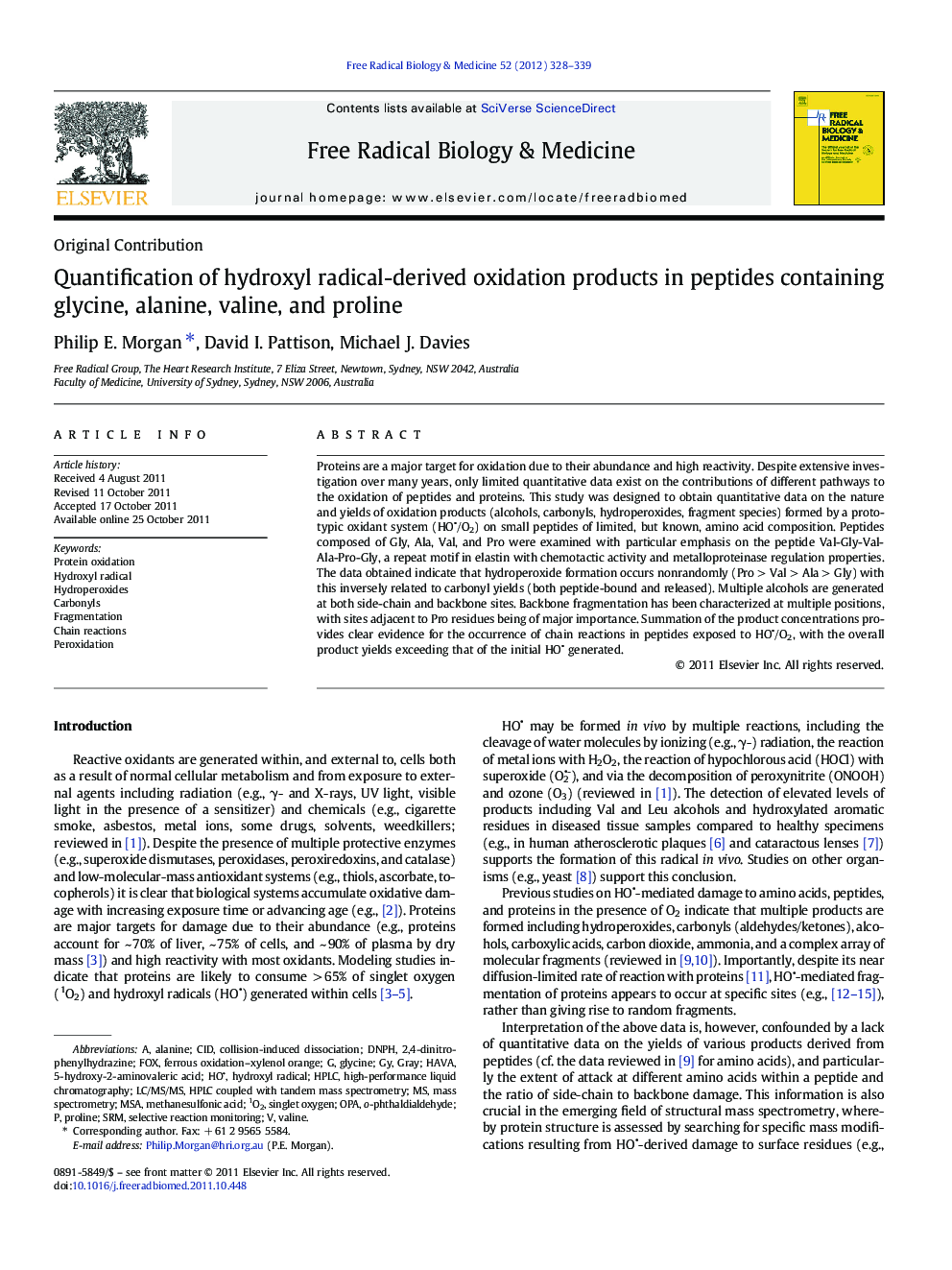| کد مقاله | کد نشریه | سال انتشار | مقاله انگلیسی | نسخه تمام متن |
|---|---|---|---|---|
| 1908934 | 1046694 | 2012 | 12 صفحه PDF | دانلود رایگان |

Proteins are a major target for oxidation due to their abundance and high reactivity. Despite extensive investigation over many years, only limited quantitative data exist on the contributions of different pathways to the oxidation of peptides and proteins. This study was designed to obtain quantitative data on the nature and yields of oxidation products (alcohols, carbonyls, hydroperoxides, fragment species) formed by a prototypic oxidant system (HO
• /O2) on small peptides of limited, but known, amino acid composition. Peptides composed of Gly, Ala, Val, and Pro were examined with particular emphasis on the peptide Val-Gly-Val-Ala-Pro-Gly, a repeat motif in elastin with chemotactic activity and metalloproteinase regulation properties. The data obtained indicate that hydroperoxide formation occurs nonrandomly (Pro > Val > Ala > Gly) with this inversely related to carbonyl yields (both peptide-bound and released). Multiple alcohols are generated at both side-chain and backbone sites. Backbone fragmentation has been characterized at multiple positions, with sites adjacent to Pro residues being of major importance. Summation of the product concentrations provides clear evidence for the occurrence of chain reactions in peptides exposed to HO
• /O2, with the overall product yields exceeding that of the initial HO
• generated.
Figure optionsDownload high-quality image (274 K)Download as PowerPoint slideHighlights
► There is little quantitative data on major peptide and protein oxidation pathways.
► Peptides containing Gly, Ala, Val, and Pro were exposed to hydroxyl radicals and O2.
► Hydroperoxide formation was non-random and inversely related to carbonyl yields.
► Multiple alcohols were generated at both side-chain and backbone sites.
► Backbone fragmentation occurred at multiple positions, particularly adjacent to Pro.
Journal: Free Radical Biology and Medicine - Volume 52, Issue 2, 15 January 2012, Pages 328–339